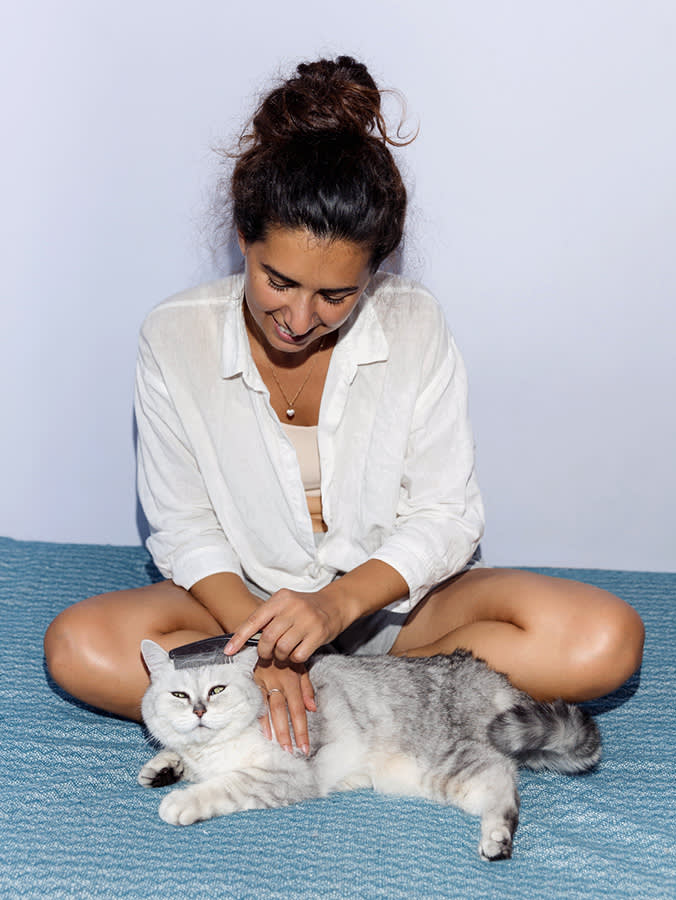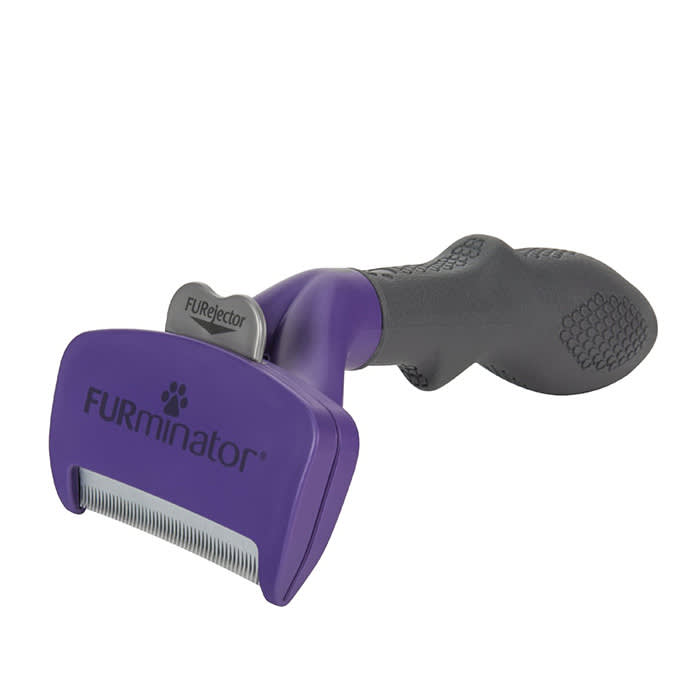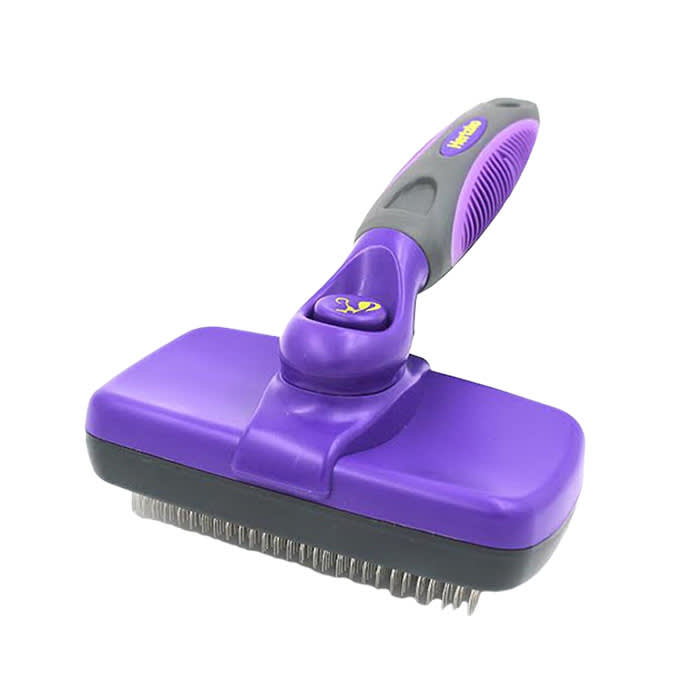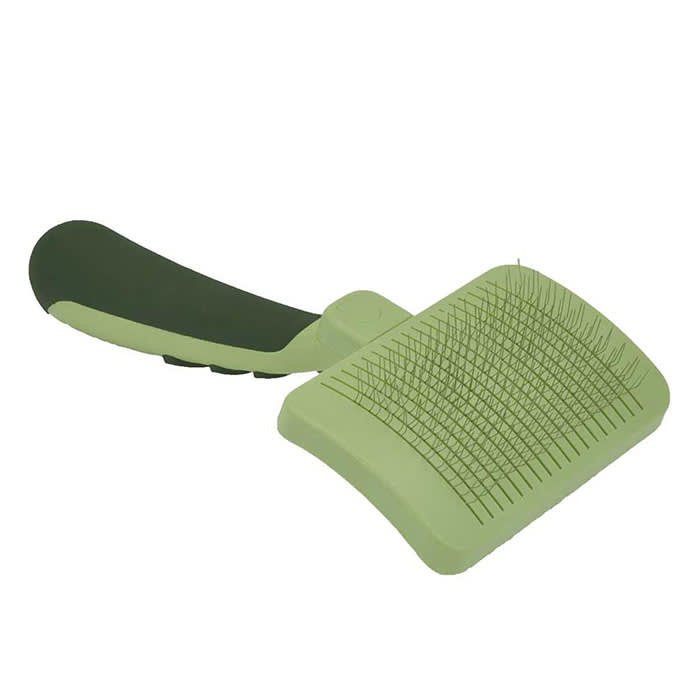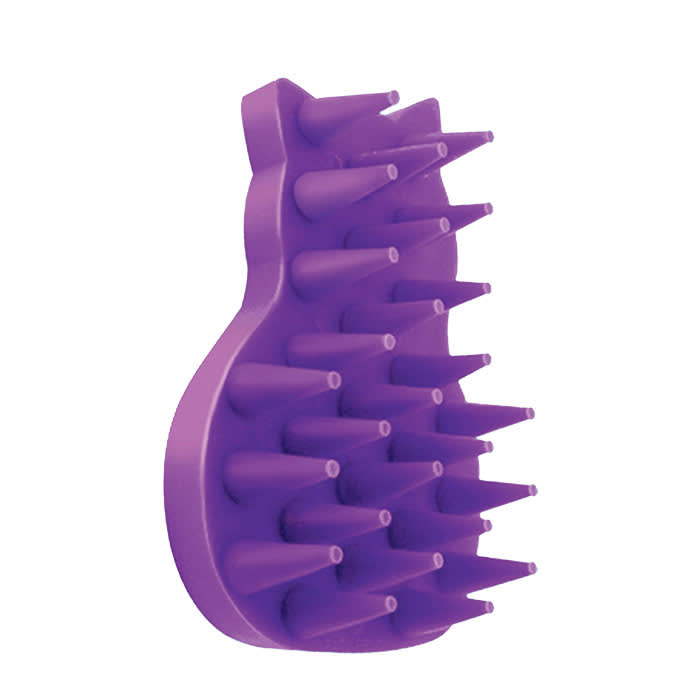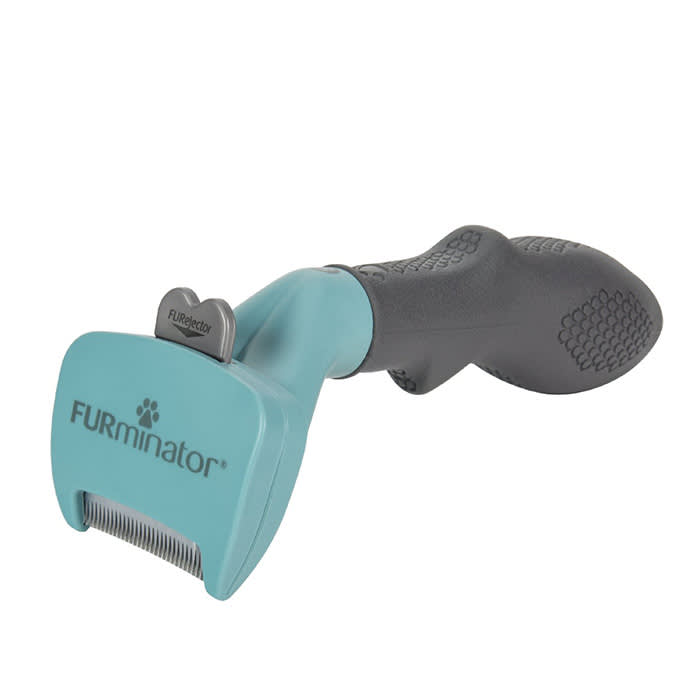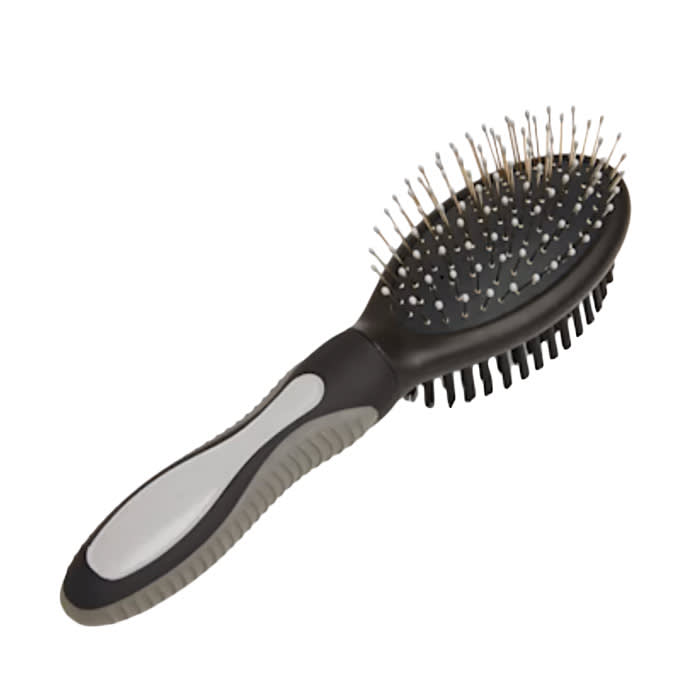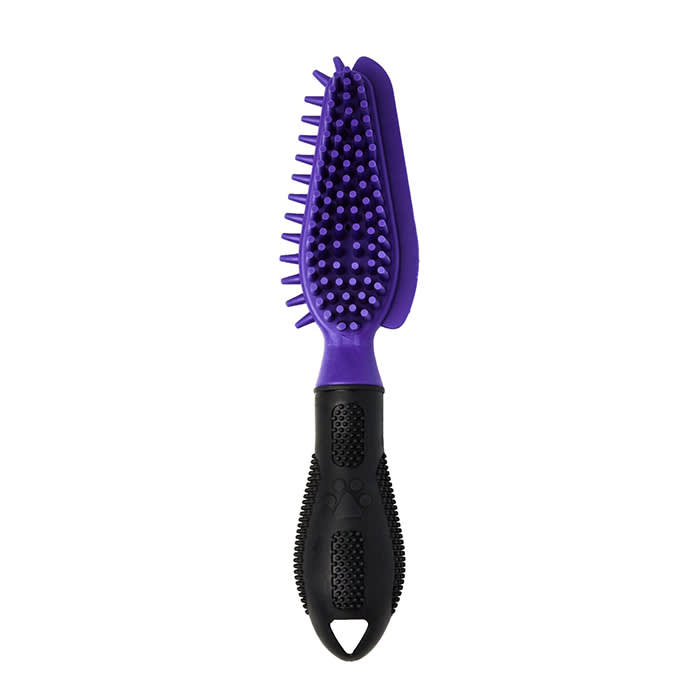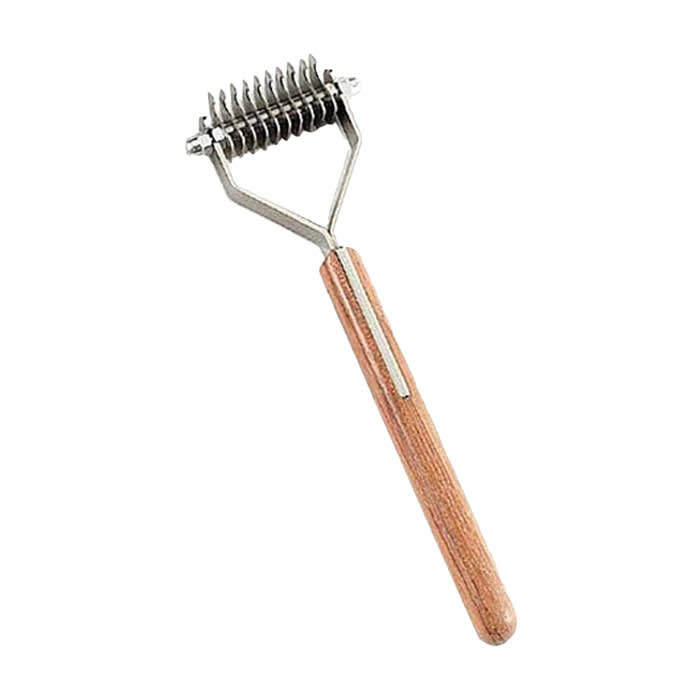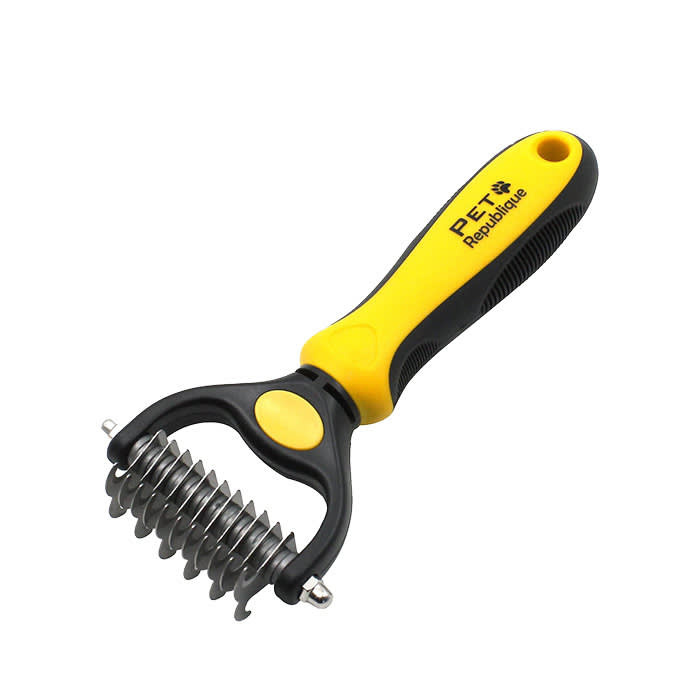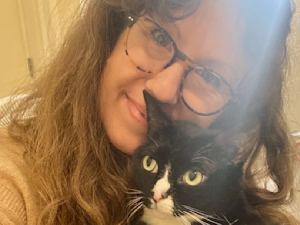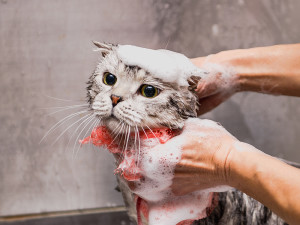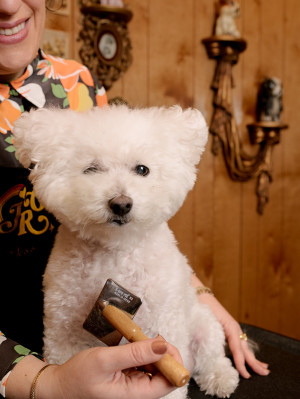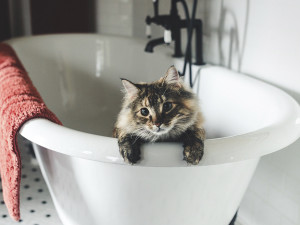The 14 Best Cat Brushes to Buy in 2025
Level up your grooming game.
In this article:
The Best Cat Brush Brushes for Long-Haired Cats Brushes for Medium-Haired Cats Brushes for Short-Haired Cats Best Grooming Brushes Best Deshedding Brushes
If you’re lucky enough to live with a cat — or three, if you’ve really committed — then you’re probably familiar with the clusters of cat hair that go drifting across the floors like tumbleweeds when you don’t brush your cat regularly (and sometimes even when you do). Brushing a cat helps remove loose hair that’s been shed, so it doesn’t settle on every surface in your home and cling to your clothing. But brushing your cat has other upsides, too.
“Brushing your cat is not only beneficial, but can be a bonding experience for the two of you,” says cat behaviorist Stephen Quandt, founder of Stephen Quandt Feline Behavior Associatesopens in new tab. “It also allows you to monitor for bald patches, unusual bumps, or wounds that need a vet’s attention.”
If you have a senior cat, brushing is even more important. “With older cats who are not as flexible as they once were, brushing assists them with areas on their bodies that are harder to reach,” Quandt says.
There are lots of cat brushes on the market, and while some of them look fairly similar, many are actually quite different. You can find cat brushes with special features like undercoat rakes, dematting tools, and self-cleaning bristles. Some pet-grooming products are even eco-friendly, so you can do both the earth and your cat some love at the same time.
How much do you spend on your pet per year?
Choosing the right brush for your cat involves considering your cat’s coat type and preferences. For short-haired cats, a soft-bristle or rubber brush can effectively remove loose hair without irritating the skin. Long-haired cats benefit from slicker brushes or combs to prevent matting and tangling. Cats with dense undercoats may require a deshedding tool to reduce shedding.
Here are 15 of the best cat brushes out there, for cats with long hair, short-haired cats, and those somewhere in between. Shop our picks for the best deshedding and grooming tools, then settle in for a bonding session with your newly groomed kitty. (You can worry about feline oral hygiene later — because yes, you do need to brush your cat’s teeth.) Snuggles all around.
Btw, our editors (and their pets) picked out these products. They’re always in stock at the time we publish, but there’s a chance they’ll sell out. If you do buy through our links, we may earn a commission. (We’ve got a lot of toys to buy over here, you know?)
The best cat brush
Cat brushes come in many designs, and with many different types of bristles. “The most important consideration is to use a brush your cat likes,” Quandt says. He likes metal combs for all types of cats, basic soft-bristled combs for long-haired cats, and recommends a de-matting and undercoat-removing brush for long-haired cats, as well. You’ll want to make sure the handle is comfortable for you to use, and that the brush is easy to clean.
In a rush? Here’s a cheat sheet with our recommendations for the best type of brush in each category below:
Best brush for long-haired cats: FURminator Long Hair Cat Deshedding Toolopens in new tab
Best brush for short-haired cats: KONG Cat ZoomGroom Multi-Use Brushopens in new tab
Best brush for cats with medium hair: Furbliss Pet Brushopens in new tab
Best grooming brush overall: Chris Christensen Butter Combopens in new tab
Best deshedding brush for cats: Mars Coat King Rake Stripper Toolopens in new tab
Best bushes for long-haired cats
Long-haired cats, such as Maine Coons, are the most in need of brushing, with many experts recommending a daily brushing session. They need consistent brushing and maintenance to keep their coats healthy and well-groomed. Here are three brushes to try.
Best brushes for short-haired cats
You can get away with more infrequent brushing if you have a short-haired cat, but you’ll still want a brush with a comfortable handle — and since there’s less hair between the brush and your cat, be sure the bristles are gentle. These three choices fit the bill nicely.
Best brushes for cats with medium hair
A medium-haired cat is pretty adaptable as far as what type of brush will work best. While most any brush will work for these cats, remember to always brush in the direction of the coat, and be mindful of the rear, belly and tail areas, which Quandt says tend to be extra sensitive. Try one of these three choices (or any on this list, really).
Best grooming brushes for cats
These professional-grade grooming tools that will leave your cat gleaming. Suitable for cats with coats of all lengths, these brushes (and one comb) get rave reviews from cat parents.
Best deshedding cat brushes
A deshedding cat brush helps remove an undercoat: the coat under your cat’s coat. (That’s right, some cats have double coats.) It’s basically a heavy-duty cat brush. If you have a cat that frequently gets mats in their fur, or coughs up a lot of hairballs, a deshedding tool might be a good idea. Give one of these a try.
FAQs (People also ask):
What are the qualities of a good cat brush?
A good cat brush gets the job done with the least amount of struggle, for both you and your cat. It will be effective, easy to clean, comfortable to hold, and durable. Sterling emphasizes that your cat will ultimately decide which brush is the best. “Let the cat be the judge of which brush is the right one. Don’t force anything on the cat,” she says.
Should I consider my cat’s breed when choosing a brush?
Absolutely. The best brush for a Persian cat is going to be different from the best brush for a Ragdoll cat or the best brush for a Siamese cat. The way you brush these cats will be different as well. “Some breeds, like Burmese, have dense hair and no undercoat, so gentle brushing is all that is required,” Quandt says. “Flat-faced cats may benefit from gentle brushing around their faces, and very gently and carefully around their eyes with a soft toothbrush or a gentle cloth.”
How often should you brush your cat?
“Brushing regularly will reduce matting in longer-haired cats and reduce the number of hairballs in potentially all cats and can reduce allergens in your home,” Quandt says. He suggests once or twice a week for short-haired cats, every other day or a few times a week for medium-haired cats, and every day for long-haired cats.
How long should a brushing session last?
There’s no set amount of time that’s right for every cat. “Grooming should take just a few minutes, but be thorough and gentle, and take your time,” Quandt says. “It’s not a race, so think of it as a massage. Watch how your cat grooms themselves and use that as a guide for creating a gentle and methodical experience.”
Sterling encourages you to pay attention to how your cat is responding. “Go with the flow and with the cat's reaction: How does your cat like it? Where does your cat like it? How long does your cat like it? And then take it from there and work with your cat.”
Does brushing my cat help with shedding?
“Brushing not only removes dead hair — which reduces shedding — it helps remove grease, dirt, skin flakes, and improves blood circulation in the skin,” Quandt says.
